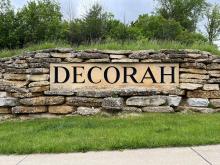
Ozarks Electric Cooperative has a plan to bring fast, affordable, reliable connectivity to northwest Arkansas and northeast Oklahoma.
Fast, Affordable, Reliable Connectivity At Last
OzarksGo, a wholly owned subsidiary of the electric co-op, will provide Fiber-to-the-Home (FTTH) Internet service with symmetrical speeds of up to a Gigabit (1,000 Megabits) per second. The fiber network will cost $150 million to build over the next six years.
ArkansasOnline and local news station KSFM reported on the future network. The residential FTTH service will have no data caps and OzarksGo will offer additional services, such as telephone and video. At the end of the project, all co-op members will have access to the network's services.
According to the FCC 2016 Broadband report, 25 percent of all Arkansas residents don't have access to broadband (defined as 25 Megabits per second (Mbps) download and 3 Mbps upload). In Oklahoma, the FCC puts the numbers higher at 27 percent. Rural areas are even higher with 48 percent lacking in Arkansas and 66 percent missing out in Oklahoma. Considering the data collection process depends on self-reporting by ISPs, those numbers are considered low. The number of households that do not have access to federally defined broadband, especially in rural areas, is higher.
Soon though, these Arkansas and Oklahoma residents will have access to fast, affordable Internet access. General manager for OzarksGo Randy Klindt, who previously worked on Co-Mo Electric Cooperative's FTTH network, explained in the video below that the price for a Gigabit will be less than $100, which is an entirely opt-in service.
Ozarks Electric Cooperative serves about 71,000 customers, including businesses. Since the service area is so large, OzarksGo will build the network incrementally over the next six years. Each phase will cost between $25 and $35 million - for a total of around $150 million. This fall, they will begin construction on the first phase.
Fiber for the Electric Side
The network will also monitor the electric system by connecting substations and offices, improving efficiency. The co-op recently received approval for a rate-increase for rising costs in the electric system; the fiber network will help manage those electric costs.
Monitoring the electric system with a fiber network can shorten or eliminate outages, and this reduces electricity rates over time. For instance, the fiber network in Chattanooga, Tennessee, brought the city's electric rates 5 percent lower than they would have been without the fiber smart grid. Alyssa Roberts, a spokesperson for the co-op, told ArkansasOnline that the fiber system is expected to pay for itself through cost-savings on operations and maintenance.







